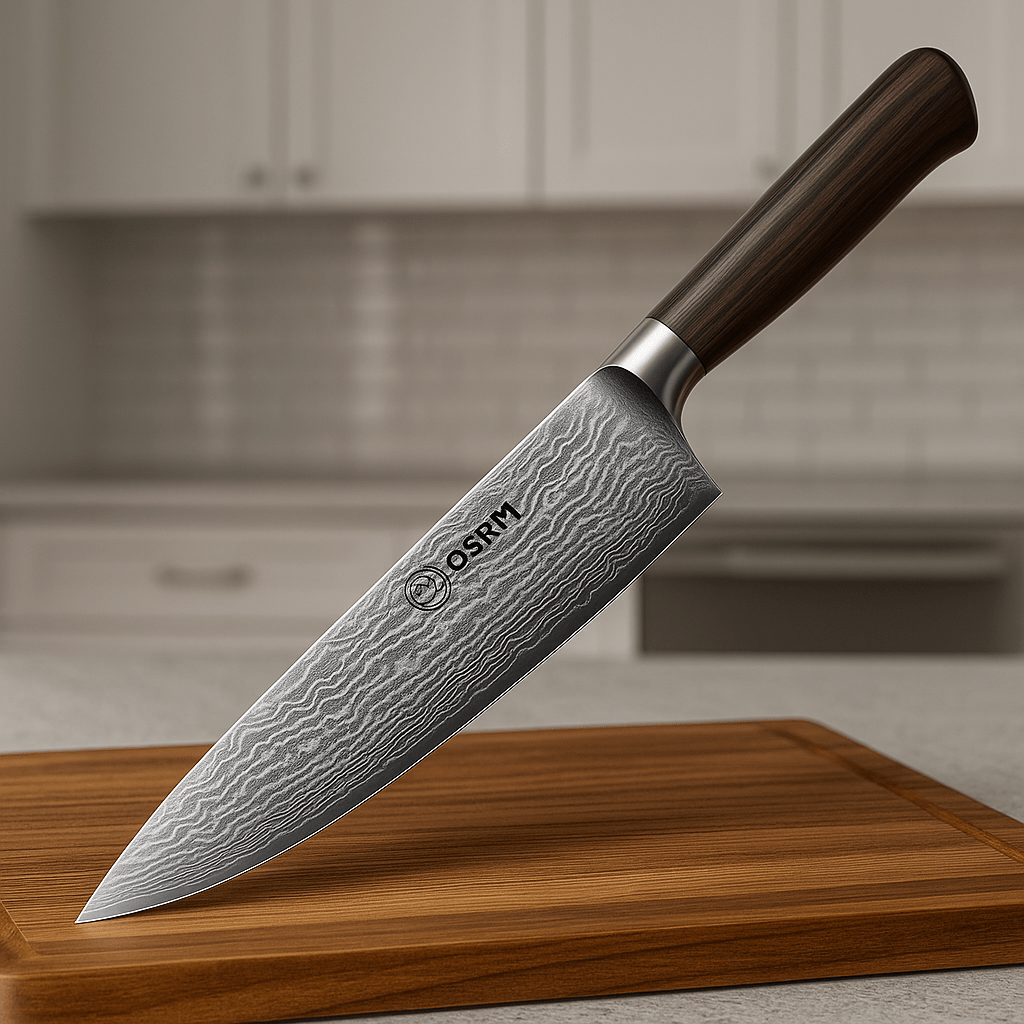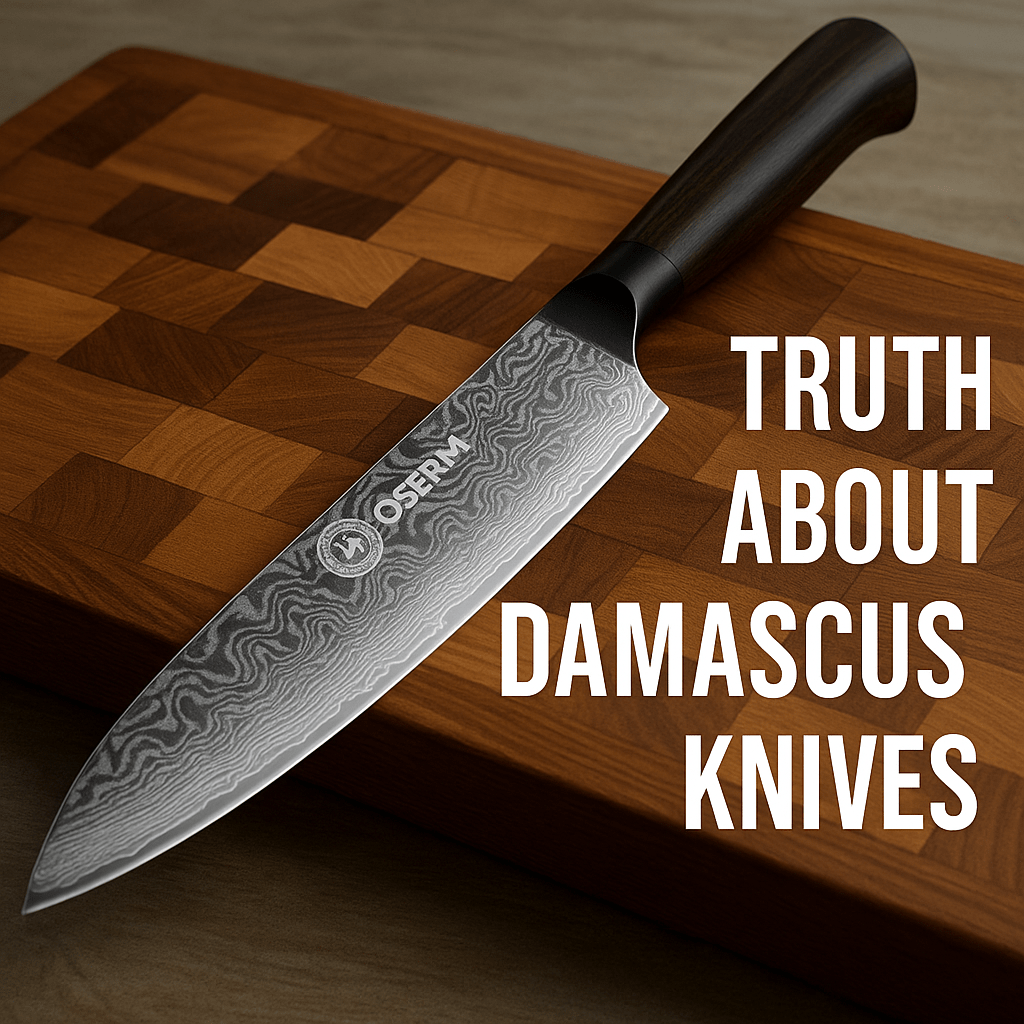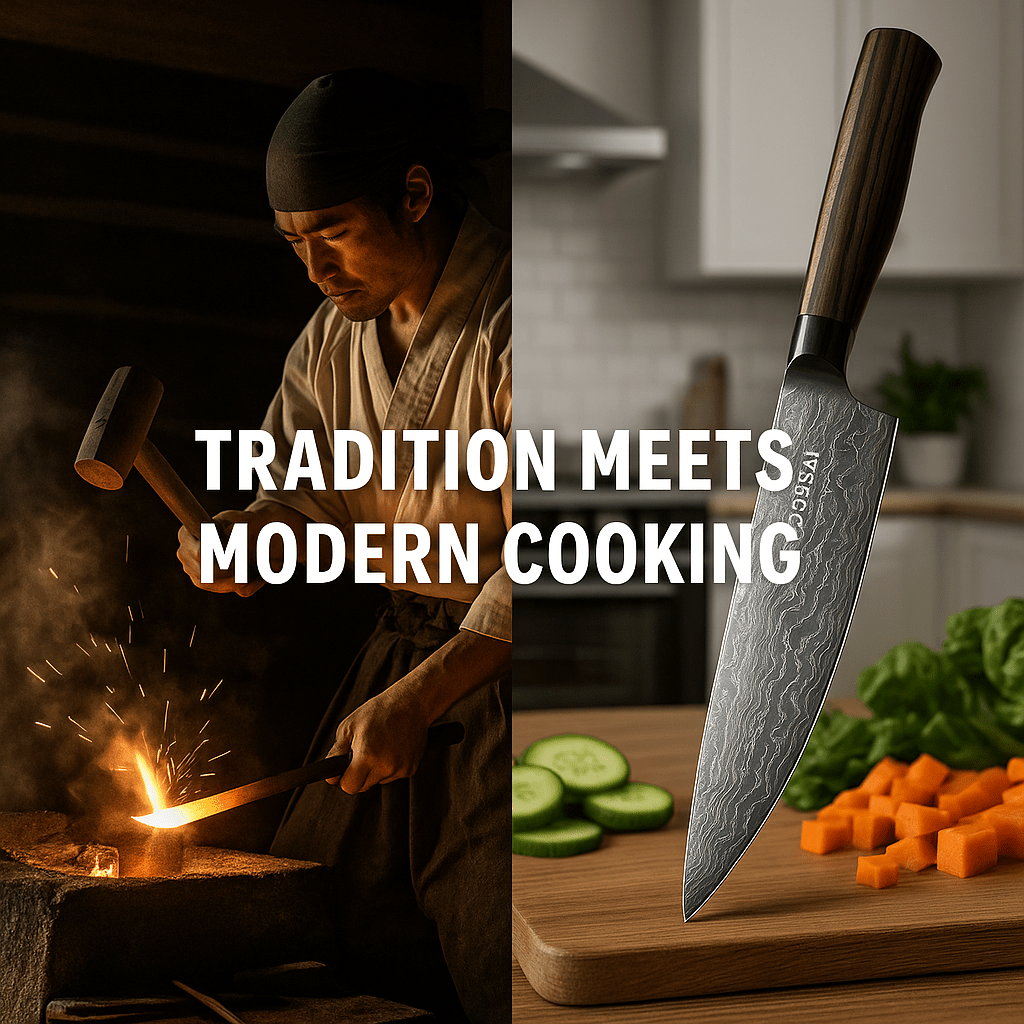
Knife Care 101 – How to Make Your Knives Last Longer
Buying a high-quality knife, whether it’s a Japanese Santoku or a Damascus Gyuto, is only the first step. Proper care ensures your knives stay sharp, safe, and beautiful for years to come. Here’s a complete guide on how to extend the lifespan of your knives and keep them performing like new.
Why Knife Care Matters
A well-maintained knife not only lasts longer but also improves your cooking experience. Sharp blades cut more efficiently, prevent accidents, and preserve the texture of ingredients. Neglecting care, on the other hand, leads to dull edges, rust spots, and even broken blades.
Daily Knife Care Essentials
- Wash Immediately After Use: Hand wash your knife with mild soap and warm water. Avoid leaving it in the sink where it can rust or chip.
- Dry Thoroughly: Use a soft towel to dry the knife immediately. Even stainless steel can develop water spots or rust if left wet.
- Avoid Dishwashers: High heat, detergents, and clashing with other utensils will damage the blade and handle.
Proper Knife Storage
How you store your knives directly impacts their longevity. Throwing knives in a drawer is one of the fastest ways to dull or chip the edge.
- Magnetic Knife Strip: Keeps knives accessible, organized, and safe from contact damage.
- Knife Block or Stand: Protects edges while providing easy storage on the countertop.
- Blade Guards: Essential if you must store knives in a drawer.
Sharpening vs Honing
Many people confuse sharpening with honing, but they serve different purposes:
- Honing: Realigns the blade edge without removing metal. Best done weekly with a honing rod.
- Sharpening: Actually removes metal to create a new edge. Typically done every few months using a whetstone or professional service.
Best Practices for Sharpening
- Use a whetstone for the sharpest, most precise edge. Japanese knives like OSERM’s Damascus series perform best at a 15° angle.
- Soak the whetstone in water for 10–15 minutes before use.
- Move the knife evenly across the stone, maintaining the angle consistently.
- Finish with a fine-grit stone for razor-sharp results.
Habits That Damage Knives
- Cutting on Hard Surfaces: Glass or ceramic boards dull knives quickly. Use wooden or plastic cutting boards.
- Improper Use: Knives are not screwdrivers, can openers, or bone choppers (unless it’s a cleaver).
- Leaving Knives Wet: Prolonged exposure to moisture leads to rust and corrosion.
Knife Care for Damascus Knives
Damascus knives require the same care as other high-quality blades but deserve extra attention due to their unique steel patterns:
- Oil the Blade: Lightly oil the blade occasionally to protect against moisture and preserve the Damascus pattern.
- Hand Wash Only: Never use a dishwasher or harsh chemicals that can damage the layered steel.
- Display with Care: Use magnetic strips or stands to showcase the blade without risk of scratching.
OSERM’s Commitment to Knife Longevity
At OSERM, we don’t just provide knives—we provide the knowledge to care for them. Our Damascus knives are designed with edge retention in mind, but with proper care, you’ll extend their lifespan even further. Pair your knives with an OSERM magnetic strip or whetstone to maximize both safety and sharpness.
Conclusion
Taking care of your knives is simple but essential. Wash, dry, store, and sharpen correctly, and your knives will reward you with years of precise, enjoyable cooking. A well-maintained knife isn’t just a tool—it’s an investment in your culinary journey.
Weekly Deal 🔥
Keep your knives performing at their best. Shop OSERM’s Damascus Knife Sets and pair them with premium magnetic holders and whetstones for complete care solutions.
You Might Also Like
- The Ultimate Guide to Knife Blade Angles
- Honing Rod vs Sharpening Stone – What’s the Difference?
- Wooden Cutting Board vs Plastic – Which Protects Knives Better?
Tags: knife care, Japanese knife maintenance, OSERM knives, sharpening tips, Damascus knife care






